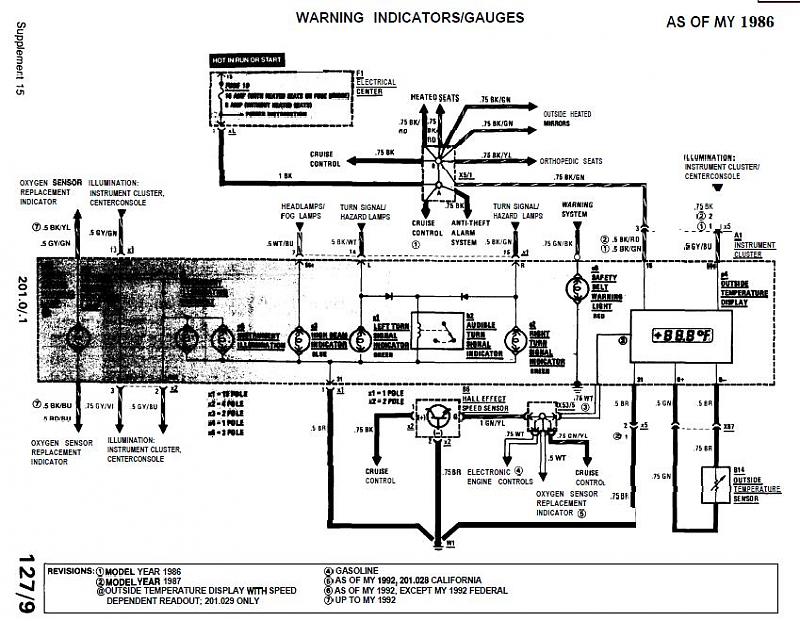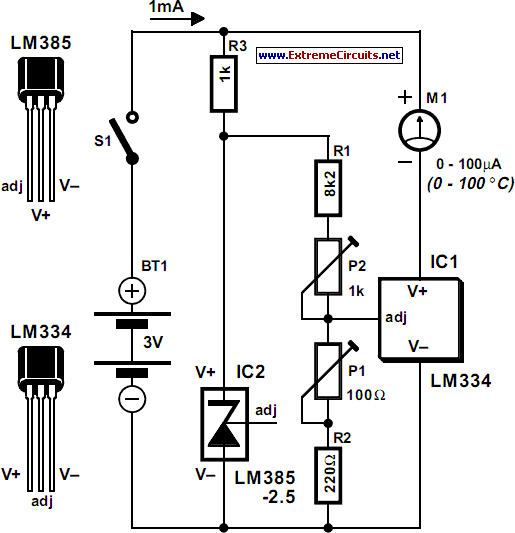
w201 thermometer question

The 1989 2.6 outside thermometer (Celsius) has malfunctioned and stopped displaying readings. A replacement unit was sourced from an eBay seller.
The malfunctioning outdoor thermometer likely employs a thermistor or a similar temperature-sensing component to measure ambient temperature. In a typical design, the thermistor's resistance changes with temperature, allowing the device to convert this resistance change into a corresponding voltage signal.
The circuit may include a microcontroller or an analog-to-digital converter (ADC) to process the voltage signal from the thermistor. This processed signal is then used to drive a display, which could be an LCD or LED, showing the temperature in degrees Celsius.
Power for the thermometer is typically supplied by batteries or solar cells, depending on the design. An efficient power management circuit may be integrated to prolong battery life, often including components such as voltage regulators and capacitors to stabilize the power supply.
In cases where the display has blacked out, potential issues could include a faulty thermistor, broken connections, or a malfunctioning display driver. Troubleshooting would involve checking the integrity of the connections, testing the thermistor's resistance at various temperatures, and ensuring that the display circuitry is functioning correctly.
Overall, the replacement unit should be compatible with the existing mounting and wiring setup, ensuring a seamless installation and restoration of functionality to the outdoor thermometer.My `89 2.6 outside thermometer (Celsius) has blacked out and I was lucky by finding a good e-bayer who has one.. I bought it but appartently it was.. 🔗 External reference
The malfunctioning outdoor thermometer likely employs a thermistor or a similar temperature-sensing component to measure ambient temperature. In a typical design, the thermistor's resistance changes with temperature, allowing the device to convert this resistance change into a corresponding voltage signal.
The circuit may include a microcontroller or an analog-to-digital converter (ADC) to process the voltage signal from the thermistor. This processed signal is then used to drive a display, which could be an LCD or LED, showing the temperature in degrees Celsius.
Power for the thermometer is typically supplied by batteries or solar cells, depending on the design. An efficient power management circuit may be integrated to prolong battery life, often including components such as voltage regulators and capacitors to stabilize the power supply.
In cases where the display has blacked out, potential issues could include a faulty thermistor, broken connections, or a malfunctioning display driver. Troubleshooting would involve checking the integrity of the connections, testing the thermistor's resistance at various temperatures, and ensuring that the display circuitry is functioning correctly.
Overall, the replacement unit should be compatible with the existing mounting and wiring setup, ensuring a seamless installation and restoration of functionality to the outdoor thermometer.My `89 2.6 outside thermometer (Celsius) has blacked out and I was lucky by finding a good e-bayer who has one.. I bought it but appartently it was.. 🔗 External reference





